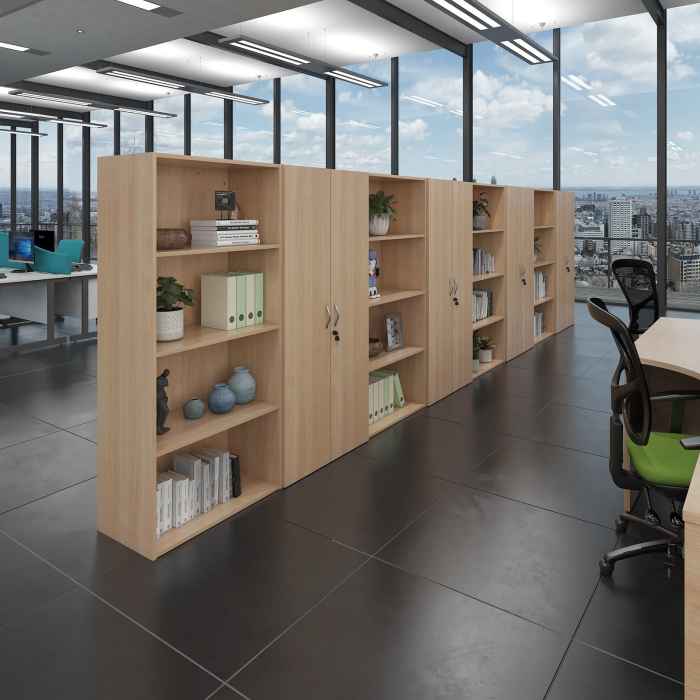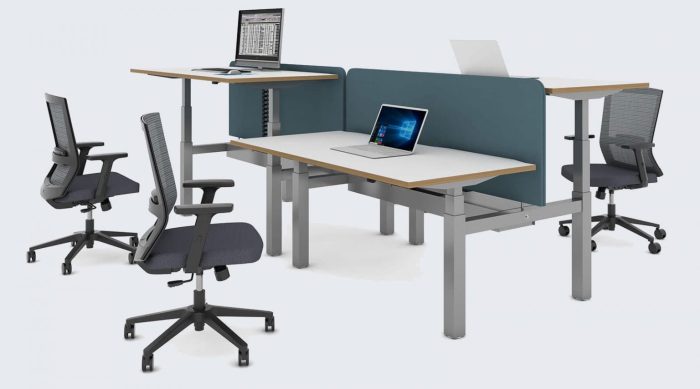Office furniture 2 go takes center stage in this comprehensive guide, inviting readers to embark on an enlightening journey through the world of office design. With a focus on the latest trends, ergonomic considerations, and industry-specific needs, this guide provides a wealth of insights for creating functional, comfortable, and stylish workspaces.
From innovative materials to smart desks and collaborative workspaces, we delve into the transformative impact of technology on office furniture design. We explore the importance of ergonomics, offering guidelines for selecting chairs, desks, and other furniture pieces that promote employee health and productivity.
Whether you’re seeking modern, contemporary, traditional, or industrial styles, we showcase furniture pieces that embody each aesthetic and discuss their suitability for various work environments.
Office Furniture Trends and Innovations

The modern office is undergoing a significant transformation, driven by technological advancements and evolving workstyles. Office furniture is no longer just about providing a place to sit and work; it’s about creating dynamic, collaborative, and healthy work environments that support employee well-being and productivity.
In this section, we’ll explore the latest trends and innovations in office furniture design, examining emerging materials, ergonomic features, sustainability practices, and the impact of technology on the workplace.
Materials and Ergonomics
Materials and ergonomics are two key areas where innovation is driving significant changes in office furniture design. New materials, such as bioplastics and recycled fabrics, are being used to create more sustainable and environmentally friendly furniture. At the same time, ergonomic features, such as adjustable desks and chairs, are becoming increasingly common, helping to reduce discomfort and improve employee well-being.
Technology and the Office
Technology is also having a major impact on office furniture design. Smart desks, for example, can be programmed to adjust to the user’s preferred height and sitting position. Collaborative workspaces, designed to foster teamwork and idea sharing, are also becoming more popular.
These spaces often feature flexible furniture that can be easily reconfigured to accommodate different tasks and team sizes.
Sustainability in Office Furniture
Sustainability is another important trend in office furniture design. Manufacturers are increasingly using recycled materials and eco-friendly manufacturing processes to reduce their environmental impact. Some companies are even offering furniture leasing programs, which allow businesses to upgrade their furniture without having to dispose of old pieces.
Ergonomic Considerations for Office Furniture
Ergonomic design plays a pivotal role in ensuring employee well-being and optimizing productivity in office settings. By aligning furniture with human body mechanics, it reduces physical discomfort, promotes good posture, and minimizes the risk of work-related musculoskeletal disorders.
Selecting Ergonomic Furniture
When selecting ergonomic office furniture, several key guidelines should be considered:
- Chairs:Choose chairs with adjustable seat height, lumbar support, and armrests that provide proper support and reduce back strain.
- Desks:Opt for desks with adjustable height or keyboard trays to allow for proper elbow positioning and minimize shoulder and neck tension.
- Other Furniture:Ensure footrests, wrist rests, and other accessories are available to support proper posture and reduce strain.
Adjustable Furniture and Active Seating
Adjustable furniture allows employees to customize their workstations to fit their individual needs, reducing the risk of discomfort and injury. Standing desks, which alternate between sitting and standing positions, promote movement and reduce sedentary time, improving circulation and overall well-being.
Active seating options, such as balance balls and wobble chairs, encourage core engagement and improve posture, enhancing both physical and mental alertness.
Office Furniture Styles and Aesthetics: Office Furniture 2 Go

The style and aesthetics of office furniture play a significant role in creating a productive and inspiring work environment. Different styles can evoke various emotions and impressions, influencing employee morale, creativity, and overall productivity. Let’s explore some common office furniture styles and their suitability for various work environments:
Modern Office Furniture
Modern office furniture is characterized by clean lines, geometric shapes, and a minimalist aesthetic. It often incorporates natural materials such as wood, metal, and glass. Modern furniture creates a sleek and sophisticated atmosphere, suitable for contemporary and tech-forward companies. Examples include ergonomic chairs with mesh backs, sleek desks with built-in storage, and modular sofas in neutral tones.
Contemporary Office Furniture
Contemporary office furniture combines elements of modern and traditional styles, resulting in a timeless and versatile look. It often features a mix of materials, including wood, leather, and metal. Contemporary furniture is adaptable to various work environments, from corporate offices to creative studios.
Examples include leather executive chairs, wooden conference tables with glass tops, and upholstered armchairs in bold colors.
Traditional Office Furniture
Traditional office furniture evokes a sense of elegance and formality. It is characterized by intricate carvings, rich wood finishes, and classic designs. Traditional furniture is suitable for companies seeking a sophisticated and authoritative image. Examples include mahogany desks with ornate legs, leather wingback chairs, and antique credenzas.
Industrial Office Furniture
Industrial office furniture is inspired by the aesthetics of industrial warehouses and factories. It features exposed metal, reclaimed wood, and vintage elements. Industrial furniture creates a raw and edgy atmosphere, suitable for creative and collaborative workspaces. Examples include metal desks with exposed rivets, wooden crates used as storage, and Edison bulb lighting fixtures.
When selecting office furniture, it is crucial to consider the company’s brand, culture, and the desired work environment. A cohesive and aesthetically pleasing office space can boost employee satisfaction, productivity, and overall company image.
Office furniture 2 go is a great way to get the furniture you need for your office without having to go through the hassle of visiting a store. You can simply order the furniture you want online and have it delivered to your door.
Restaurant furniture plus is another great option for those who need furniture for their restaurant. They offer a wide variety of furniture options to choose from, so you’re sure to find something that fits your needs. Plus, their furniture is made from high-quality materials, so it will last for years to come.
And if you’re looking for office furniture 2 go, they have a great selection of that as well.
Office Furniture for Specific Industries

The needs of different industries vary significantly, and so do their furniture requirements. Specialized furniture is designed to meet the unique demands of specific tasks and environments, ensuring optimal functionality and efficiency.
Considering industry-specific regulations and standards is crucial when selecting office furniture. These regulations ensure compliance with safety, health, and accessibility requirements, creating a safe and productive work environment.
Healthcare
- Patient exam tables and chairs with adjustable heights and ergonomic designs for comfort and accessibility.
- Medical carts with multiple compartments and mobility for efficient storage and transportation of medical supplies.
- Reception area furniture designed to provide a welcoming and calming atmosphere for patients and visitors.
Finance
- Executive desks and chairs with premium materials and ergonomic features for comfort and professionalism.
- Conference tables and chairs designed to facilitate collaboration and decision-making.
- Filing cabinets and storage solutions with secure locks and ample space for confidential documents.
Technology
- Height-adjustable desks and ergonomic chairs for extended periods of computer work.
- Collaborative workspaces with flexible configurations to encourage teamwork and innovation.
- Server racks and storage solutions designed to optimize airflow and prevent overheating.
Education, Office furniture 2 go
- Student desks and chairs designed for comfort and durability in classrooms.
- Teacher desks with ample storage space and ergonomic features.
- Flexible seating options, such as bean bags and floor cushions, to create a more engaging learning environment.
Office Furniture Customization and Design
In today’s dynamic work environments, customization has become essential to cater to the unique needs and preferences of businesses and individuals. Office furniture customization empowers organizations to create tailored workspaces that enhance productivity, well-being, and brand identity.
If you’re in the market for office furniture, be sure to check out raymore and flanigan furniture . They have a wide selection of high-quality furniture that will help you create a comfortable and productive workspace. And if you’re looking for something specific, their team of experts can help you find the perfect piece for your needs.
So whether you’re just starting out or you’re looking to upgrade your current office furniture, be sure to check out raymore and flanigan furniture.
Customizing office furniture offers a multitude of benefits. It allows businesses to:
- Optimize space utilization and create ergonomic layouts.
- Reflect corporate culture and brand aesthetics through design and materials.
li>Address specific functional requirements, such as specialized workstations or collaborative spaces.
The process of designing custom furniture typically involves collaborating with manufacturers who specialize in creating unique pieces. Designers work closely with clients to understand their vision, space constraints, and functional requirements. They then develop design concepts and prototypes, ensuring that the final product meets the client’s exact specifications.
Design Considerations
When designing custom office furniture, it’s crucial to consider both functionality and aesthetics. Functional considerations include:
- Ergonomics: Designing furniture that promotes proper posture and reduces physical discomfort.
- Space optimization: Maximizing space utilization without compromising comfort or functionality.
- Workflow efficiency: Creating layouts that facilitate seamless collaboration and productivity.
Aesthetic considerations include:
- Style: Selecting furniture that complements the overall design aesthetic of the office.
- Materials: Choosing materials that are durable, easy to maintain, and visually appealing.
- Colors and textures: Incorporating colors and textures that create a cohesive and inviting work environment.
By carefully considering both functional and aesthetic aspects, businesses can create custom office furniture that not only meets their specific needs but also enhances the overall work experience.
If you’re in the market for top-quality office furniture, look no further than Office Furniture 2 Go. They offer a wide selection of stylish and functional pieces that will elevate your workspace. And if you’re looking for inspiration, be sure to check out the exquisite Raymour and Flanagan furniture collection.
With its timeless designs and impeccable craftsmanship, it’s the perfect complement to any modern office. But don’t forget to come back to Office Furniture 2 Go for all your essential office furniture needs.
Final Wrap-Up
In the ever-evolving landscape of office design, office furniture 2 go empowers businesses to create workspaces that inspire, enhance productivity, and reflect their unique brand identities. By embracing the latest trends, considering ergonomic principles, and tailoring furniture to industry-specific needs, organizations can foster environments that support employee well-being, innovation, and success.
FAQ Explained
What are the key trends in office furniture design?
Current trends include a focus on sustainability, ergonomic features, smart technology, and collaborative workspaces.
How can I choose ergonomic office furniture?
Consider adjustable chairs, desks, and other furniture pieces that provide support and promote good posture.
What are the different styles of office furniture?
Popular styles include modern, contemporary, traditional, and industrial, each with its own unique aesthetic and suitability for different work environments.